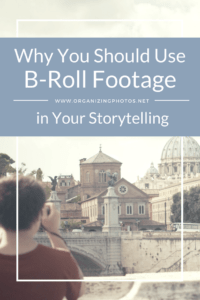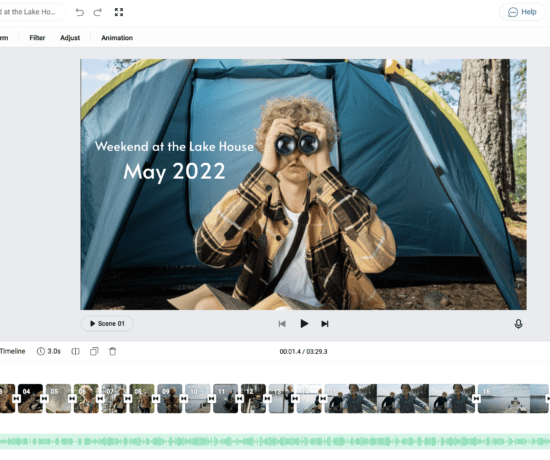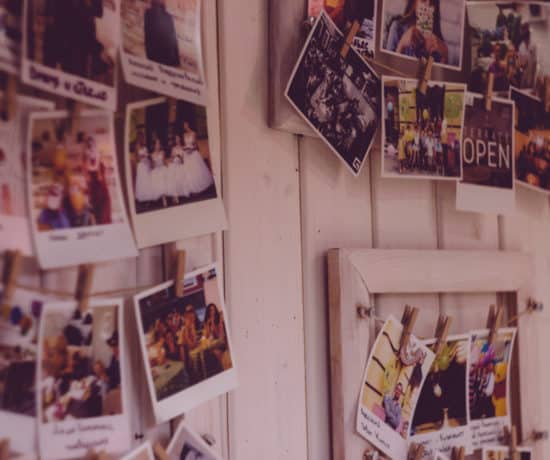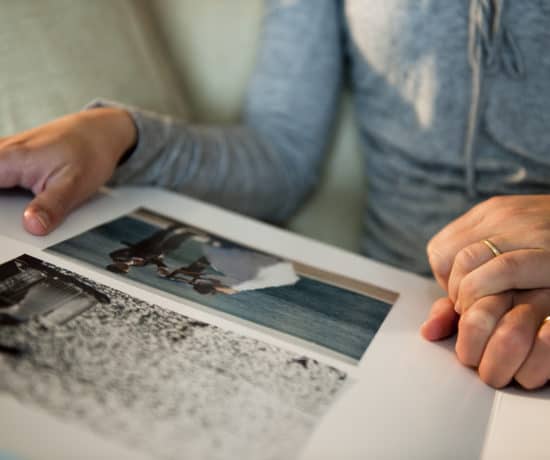Happy Save Your Photos month, readers! We hope that you’re busy organizing, scanning, and creating with your memories, and to help you along, we’ve decided to talk about an often overlooked subject – B-roll. It doesn’t get the credit it deserves, much like the “Best Actress in a Supporting role,” but we hope that this post will inspire you to embrace it for what it is = an excellent way to tell stories! Enjoy!
B-Roll is Context
In the film and video industry, we sometimes refer to A-Roll and B-Roll footage. These terms originated back in the day when filmmakers used actual film reels. The “A-Reel” was the good stuff. The “B-Reel,” also known as B-Roll, was the extra footage – any supplemental or alternative footage that added to the context. If a director wanted to shoot a war scene that focused on the main character, any footage showing the protagonist would be a part of the A-Roll. Any extra parts the Director might need, like cutaways of other people fighting or horses running away (i.e. not the main footage) would be considered part of the B-Roll.
B-Roll is essentially context, and what do storytellers need more than anything? Exactly right. We need context to help make sense of a storyline. To make it more interesting. It’s essential to any project where you want to tell a story, visual or otherwise. In a book, you would set the scene by describing the environment where the story begins. It’s the same with photos and videos. We need B-Roll as context to explain what’s going on in the scene. If we only used A-Roll, our creative projects would be a lot shorter. They would also feel like they were missing something, even though it might not be clear exactly what. This type of transition footage works with the main content to make the project the best it can be, and it helps you adjust your project’s flow. We like to use the rule of “SHOW, don’t tell” when it comes to creative projects, and B-Roll is necessary in order to achieve this.
B-Roll Can Make or Break a Project
Have you ever watched a documentary or television show that kept showing the exact same shots over and over? Well, they may have been short on B-Roll. Any number of breaking news stories come to mind. When you find yourself in this conundrum, you have no choice but to use whatever footage is available to you. It has to loop. It’s annoying to watch, and it’s extremely painful when your creative efforts are hampered like this.
One of my first experiences with the consequences of B-Roll shortage was in college. Caroline (our organizer-in-chief) and I were editors on a a documentary about the Hawaiian Child and Family Services. Our job was to collect all the daily footage from the video crew and edit our final story. Unfortunately, our photographer wasn’t on point, so when we got the footage back, only a small percentage was usable – every single time. We didn’t have the authority to replace this person, so we were stuck with whatever footage we received. We spent days and nights in the editing bay, living off giant buckets of pretzels without much sleep because we had a client delivery to make. It turned out OK in the end, but we knew it could have been much better had we just had the footage we needed. The lesson was clear – B-roll can make or break a project.
A Late Late Problem
Here’s another self-deprecating tale that taught me a lesson in the value of B-Roll. Before Corden took over, I was working on the Late Late Show show. One day we had Tom Lennon on, and I was told that he *may* want to do a photoshop picture for the show. That meant we had to take photos in front of a green screen, and then give those photos to the graphics department so they could Photoshop his head into another photo. It was my responsibility to take the photos of him. It was a bright sunny day. Almost too bright. The crew rolled out a green backdrop into the studio parking lot, and I snapped away from right to left. My goal was to get different angles of Tom because even if we were only going to use one, we needed multiple shots to see which one might fit the best. You could say I was getting the main shots and extra B-Roll shots – just in case.
When I got to the graphics department my stomach dropped. I’ll never forget it. I thought I had gotten all the shots, but apparently I was missing one. I had been in a hurry and didn’t want to keep Tom waiting, so I had rushed the process, and guess what? The one shot the director wanted was the one I didn’t have. He had even come outside beforehand to check if I had gotten all the shots. “Yes” I had replied. I was too nervous not to lie. Fortunately for me, we didn’t end up using the photoshopped pictures, but it didn’t matter. I could’ve shriveled into a tiny dead root. I had let my director down. It was a horrible feeling. It taught me a big lesson that every so often will come back around just to see if I have learnt it well enough. This lesson is: always get your extra shots – more than you need – because you can always delete images later, but it may not be possible to go back. Unless you have a time machine, that is.

How You Can Use B-Roll in Your Storytelling
So now that you know what B-Roll is, and why it’s important, let me give you some examples of how and why you should use it in your own creative storytelling.
When Photographing for Books
When you want to create a photo book, whether it’s a special event book or a yearbook, don’t just photograph the main subject. Grab a couple of extra shots of people, objects, or places in your surroundings, so you can let your photos tell much of the story. Think in terms of a full storyline, and use the B-roll to set the scene. Let it explain the sights, the sounds, the smells, etc. of that special day. People can easily get bored of seeing the same types of shots over and over again, so it’s a nice visual break to see something else. It gives your brain a break. When you create with intent – we explained this in our article on yearbooks – it’s so much easier to finish a project!
In Your Slideshows
B-Roll makes your project easier to edit, and we always use it in our slideshows and video projects. Getting that extra footage will save you a headache in editing. Often we have ideas of what to create, but that changes when you go to create it. Sometimes you come up with a better idea than you previously had, so let your creativity flow and grab those extra shots. Having more content to work with in editing gives you more creative freedom to create something amazing. On top of it, B-roll makes for great transitions, and it will let you get get away with a few mistakes here and there. If a main shot goes on for too long, it becomes easy to use extra footage to fix the problem.
In Photo Restoration & Stitching
Sometimes you need a better background. That’s just the way it is. Maybe there were tourists in your way as you were photographing the Eiffel Tower, or maybe you just need to clone a spot to make your image perfect. Sure, there are quick fix apps for that nowadays, but Photoshop is our staple. 🙂 Whatever the need may be, it’s easier to grab some extra shots and work with those instead of having to work from scratch. Think Panoramas, for example, because that’s an easy example of image stitching. The more points of reference you have, the better it turns out.
A Note on Saving B-Roll
Organizers, we hear you. And yes, we agree. While we recommend that you use B-Roll in your creative projects, there’s really no need to save and archive your extra B-Roll once your project is done. There’s absolutely no reason to keep 18 photos of the same thing in your collection, even if it’s at different angles, unless you have more projects coming up. If you’re not a creative person and don’t make any projects, you’re better off being selective from the get-go. Curation is important for any collection – always – but the way to make AMAZING photo books, slideshows, and gifts is to use a variety of great shots that come together as a whole. So go ahead all you shutterbugs, snap away happily. But archive responsibly.
What say you, dear readers? Do you have a B-Roll horror story yourself? We’d love to hear what happened. Tell us in the comment below, or tag us with your best B-Roll shot, video, or photo on Facebook!
Featured Photo Courtesy of Picography
Join the Community!
Subscribe to get our latest content by email. You will also get occasional notifications about new sales and promotions.
Please read our Privacy Policy!






oogiemOogie
September 17, 2018 at 11:09 amI’m more of a keep everything person. We don’t know what will be interesting or important to future generations. While I may curate albums and books I’d rather have the entire collection of stuff for future project snad future users of the archive.